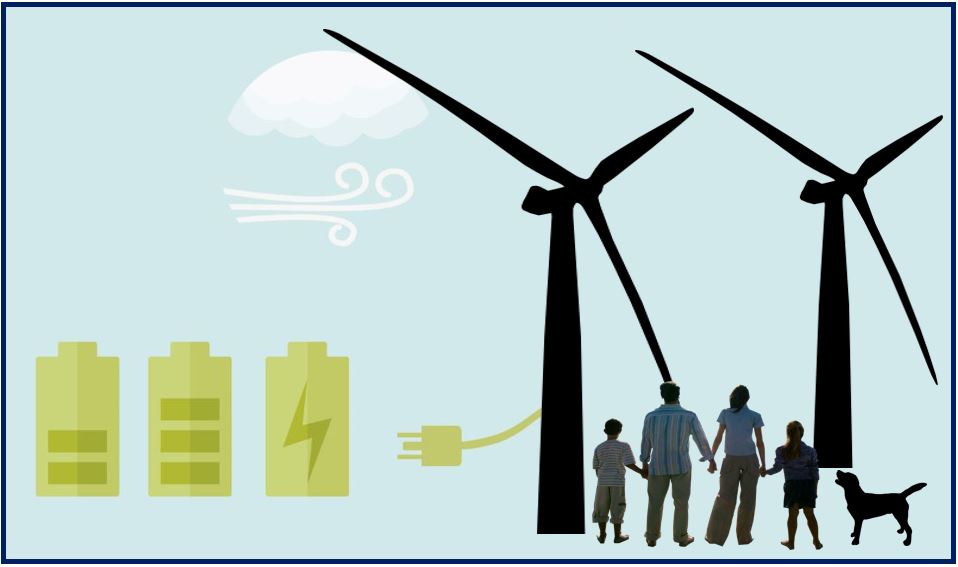
If local populations feel the planning process for building a wind farm is fair and open, their perceptions of the renewable energy source either remains steady or gradually improves, researchers found.
In fact, for local populations, openness regarding the planning process matters more than financial handouts. This is what a team of researchers from Michigan State University and the University of Michigan found.
The researchers wrote about their study and findings in the journal Land Use Policy (citation below). The authors were Sarah Banas Mills, Douglas Bessette, and Hannah Smith.
If, on the other hand, local residents feel that their voices are being ignored, their perceptions of wind turbines become more negative. And more importantly, over time, their perceptions deteriorate further.
Lead author, Sarah Mills, Senior Project Manager and Researcher at U-M’s Ford School of Public Policy, said:
“This finding shows that residents want to be heard. It has lessons not only for local government officials who hold public hearings to approve or deny the project, but also for wind energy companies that are developing these projects.”
Two studies involving populations close to wind turbines
In this study, a 2014 survey was sent to 1,000 residents across nine townships in Michigan. They all had wind turbines nearby. The survey aimed to gauge people’s perceptions about the impact of wind turbines.
Another survey occurred in 2016 with the same nine populations. The second survey asked the same questions. The researchers wanted to determine how their perceptions had changed in two years.
The authors found that, on average, attitudes remained pretty much the same. Most members of the nine local populations agreed that wind turbines created jobs. They also acknowledged that they created revenue for landowners.
On both surveys, most respondents disagreed that wind turbines created noise pollution or were bad for human health.
There were shifts in opinions in both directions
Doug Bessette, an Assistant Professor at Michigan State University’s Department of Community Sustainability, said:
“This averaging, though, masks the shifts in opinion that occur in both directions.”
To test it, the authors broke down the data to determine whether payments influenced people’s perceptions. They also checked to see whether the perceptions of the local populations were affected by how they felt about the process. In other words, did they feel it had been just or unjust? This is where the researchers found the largest difference.
According to a University of Michigan press release:
“According to the study, landowners who felt negatively about the wind-farm planning process perceived far greater negative impacts in 2016 than they did in 2014.”
“This group reported the most dramatic increases in negative perceptions across the study, and across all turbine impacts, including visual and noise problems, reduction of nearby property values, and human health problems.”
Important to acknowledge and incorporate local populations
Prof. Bessette said:
“This shows that rather than getting used to living with turbines, those residents became increasingly embittered to wind turbines over time.”
“It also shows the importance of acknowledging and incorporating community members in the planning process.”
These latest findings clash with the conclusions of previous studies. Prior research showed that local populations gradually lost their fear of turbines. In other words, previous studies had said that residents, over time, would eventually accept wind farms near their homes.
Dr. Mills said that this was the first US study that compared the perceptions of local populations at two points after construction.
Their findings, Dr. Mills added, have policy implications for policymakers and local governments.
Regarding what happens during the wind-project planning process, Dr. Mills said:
“Actions taken during a wind-project planning process by local governments, planning consultants, and wind developers have impacts that extend well beyond the final project approval meeting.”
“It may even impact any subsequent wind energy projects in the community.”
Citation
“Exploring landowners’ post-construction changes in perceptions of wind energy in Michigan,” Sarah Banas Mills, Douglas Bessette, and Hannah Smith. Land Use Policy, Volume 82, March 2019, Pages 754-762. DOI: https://doi.org/10.1016/j.landusepol.2019.01.010.
Video – Wind Energy
Wind energy involves harnessing the energy in moving air, i.e., the wind, and converting it into electricity.

